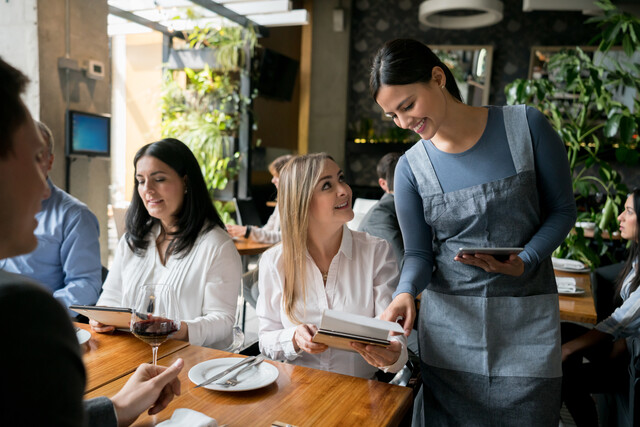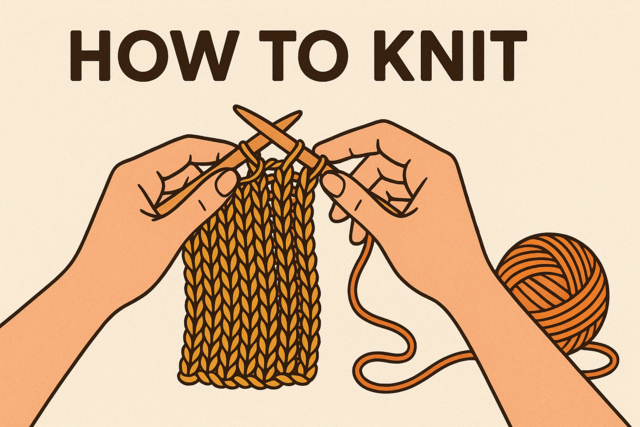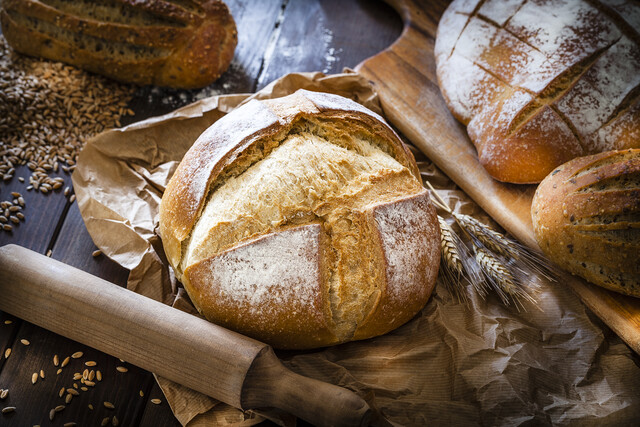Now that you've decided to host a tea, it's time to start planning. There are several decisions you have to make before you invite your first guest, but the most important one is: what is the purpose of your party. This first question will influence all the other decisions that follow.
Party purposes
The central purpose of most parties is to entertain guests, but you may also be celebrating a birthday, retirement or baby shower. You might be trying to raise funds for charity, or perhaps you want to create a performance opportunity for a youth orchestra. Maybe you want to have an afternoon dance, and you are planning a tea for refreshment. There's no reason you can't combine several purposes, but you will obviously plan a birthday party for a 12 year-old a little differently than you would a retirement party for a 75 year-old.
Steps
You may progress through these steps in a different order than what is suggested below, but it is generally a good idea to start off with an idea of how much money you're willing to spend, because that will impact many of the other decisions.
Set a budget
One of the most appealing features about tea parties is that you really can make them work with very little money. With as little as $20, you can buy two varieties of tea and an assortment of little cookies and treats for a few friends. With a few hundred dollars, you can assemble a lavish assortment of exotic teas and interesting tidbits for a hundred.
Increasing your budget
Let's say you want to host a charity fundraiser tea for 100 people, at which each guest will pay $15 admission and have the opportunity to bid on silent auction items. You personally may not want to foot the entire bill for the setup, the venue, decorations, food, and drink before the money comes in from ticket sales. In this case, you can ask local businesses for sponsorships to help with the event cost ahead of time. This option works best if you are planning an event to benefit a charity because businesses can use their contribution as a tax write-off.
To get businesses interested in sponsoring your event, you should write a sponsorship letter that includes all the relevant information. Write down the day, time and location of the event, the name of the charity it will be benefitting, and include the charity's nonprofit tax ID number (this is important because it allows the business to claim the deduction on their taxes). Be sure to explain what your charity does, and if you can, connect the charity to the business. For example, if your fundraiser tea will also be a food drive for the local food bank, you can write sponsor letters to area pediatricians and explain that the food bank's work is an effort to help hungry children in the community so that they can reap the health benefits of better nutrition.
If you seek corporate sponsors for a charity event, make sure you give the business as much publicity as you can: print their names on event brochures, programs and signs, use their logos whenever possible, and thank them in announcements during events.
If your party is not for a charitable organization, but you would still like to increase your budget, in certain situations, it may be acceptable to ask friends to help with the cost. For example, if you are planning a baby shower for your best friend Suzy, it would be okay to ask Suzy's parents and in-laws if they would be willing to help with the shower in one of several ways. They might have a home large enough to host the group, or they may be willing to contribute some money toward refreshments. If you do ask others to help with the cost, be sure you do it tactfully--in other words, never tell someone they have to help you pay for the party, and never demand or give a precise dollar amount they must pay. Understand that any contribution is a gift, and accept it graciously. It is better to scale back your party plans to meet the budget you have than to strain relationships by demanding money.
Set the date
There's nothing worse than going through all the effort to plan a party only to realize that another really cool, once-in-a-lifetime event is happening the same day. For this reason, it's a good idea to talk to your guests before you set the party date. You might select three possible dates and then ask a few of your most desired guests which days work best for them. Also check your local online calendars to see if any major events are happening the same day and time. Understand that, unless if you live in the most boring community in the universe, there will always be conflicts.
Once you have decided on your day and time, start to spread the word. If it's a small gathering, you can just call your friends (or email, or text them) to give them the date and time information. You can also use one of the online party planning tools to share invitations and information.
Online party planning
There are many internet-based party-planning tools you can use to streamline the party planning process. Punchbowl, Evite, and Eventbrite are just a few. You can also use social media, like Facebook, to help spread the word.
Online party planning tools like Punchbowl help party planners coordinate with guests. You can create online invitations to send by email. Punchbowl helps track responses. If you choose to have a potluck-type event (in which guests bring something to share), Punchbowl will also help track what items guests have selected so that you don't end up with 45 plates of deviled eggs.
If you choose an online planning tool, you will also need to follow up with your guests who may not spend much time online. Everyone has one or two friends who only check their email every six years--you know who they are. Make sure that you reach out to those friends by more traditional methods (phone, print invitation) so that they don't miss the word and end up left out.
The guest list
There are two key factors that will limit the number of people you can invite to your event: budget and space. Clearly, the more people you have, the more expensive the party will become. One way you can work around that is by choosing a potluck tea party, in which you ask your guests to bring an item to share. As the host, you can focus on providing the tea itself, while others bring little sandwiches, cookies, scones, and accompaniments.
As for the available space, you don't need as much room for a tea as you would for a sit-down dinner, since not everyone needs to be seated at a table at the same time. During pleasant weather, you can also use outdoor spaces around your home (if you have them) like the garden or deck.
In general, it is better party politics to invite more people than you think will come so that you don't offend your friends. Tea parties offer you the opportunity to host more people than other types of parties, but you still must consider limits of space, seating, serving ware, and parking. As always, the comfort of your guests is the most important factor.
Location
You can host a tea party in any size space--your living room, kitchen, balcony, deck, or garden are great sites for these events. However, if you would like to host more people than your living space can accommodate (or if you just don't want everyone in your home), then you'll need to consider other venues depending on your budget.
Low-budget venues
Aside from your own home, some other ideas for free or very inexpensive venues to host a tea party include:
-
A friend's or parent's house
-
A meeting room at your church
-
A city park (if necessary, reserve the space ahead of time)
If you are planning a fundraiser tea for charity, you may be able to rent meeting space at a hotel free of charge.
Mid-range venues
If you have a big guest list and a few hundred dollars to spend on a location, you might try the following venues for your tea party:
-
A dance studio
-
A fire hall
-
Community organizations' meeting spaces, like the Lions Club, American Legion, Veterans of Foreign Wars, YMCA, or community recreation center.
High-end venues
Depending on the size of your event, you may wish to hold your event in the kind of venue that might host weddings. At the higher end of the price scale, you can expect a more attractive venue and better service. Many (but not all) high-end venues will insist that their staff handle all the food and beverage service at your event. This will increase the cost of the event, but it will dramatically reduce your workload and allow you to accommodate a larger group of guests without the stress. Some ideas of high-end venues include:
-
Hotels
-
Bed and Breakfasts
-
Tea houses
-
Restaurants with banquet rooms
-
Conference centers
Themes
A tea party is, in itself, a theme. You can focus that theme on the specific type of event you are hosting. Some possible ideas include:
-
Vintage: What was old is new again. Tea parties already carry a connotation of days gone by, and a vintage tea allows you to play off that old-fashioned theme by asking guests to wear vintage or Sunday best attire. People may need some direction as to what that means: suggest that men wear coats and ties, hats, vests, or bow ties. For ladies, gloves or hats are easy. Women who already enjoy vintage attire may get out their back-seamed stockings or style their hair in Victory Rolls (a popular hairstyle in the 1940s). You can play jazz or big-band music in the background, and pick up old-fashioned-looking tea sets at antique stores.
-
Derby Day: The spring is a great time to bring the magic of the Kentucky Derby to a tea party, wherever you happen to live. This theme works best if your friends happen to be horse people, or at least are familiar with horse races. Ladies wear sundresses, but the big focus is the elaborate hat. Men wear khakis, jackets and ties. Although alcohol (mint juleps and mimosas) is generally a big part of the actual Derby, it is optional at your Derby tea.
-
White: This is probably the simplest theme. People dig out all their white clothes. These parties are very popular right around Memorial Day and Labor Day because of the once-popular fashion rule that one should not wear white after Labor Day (until Memorial Day in the spring).
Children's parties lend themselves very easily to tea parties. If you have a small group of kids, you can use the opportunity to teach children about manners, like putting their napkins in the laps, waiting until everyone has been served before they eat and drink, taking small bites of treats, eating with their mouths closed, and remembering to use their napkins. It is also a great opportunity to learn about social manners, like listening to others and taking turns talking. However, for a large group of kids, there can't be such detailed focus on manners.
When planning a children's tea, don't try to serve the same fancy sandwiches you might use for adults. Instead, take familiar foods and present them creatively and attractively. For example, you might make peanut butter and jelly or ham and cheese sandwiches, but cut them with a cookie cutter. You can purchase a special knife that cuts vegetables into ridged slices for attractive slices of zucchini and carrot to serve with ranch dressing. Serve little cups of fruit salad with familiar items like strawberries, grapes and orange sections. You can make or buy mini cupcakes for desert.
Little girls may enjoy playing on some familiar themes for the party, like Alice in Wonderland (which featured a world-famous tea party), or possibly a Princess Tea Party in which you could let the girls play dress-up in princess attire, or a Diva party, in which the girls might get a mini-makeover involving vast amounts of glitter (and maybe a karaoke party), or a Japanese theme, in which they might make simple origami.
Invitations
Whether you choose to write out or print paper invitations is entirely up to you, and the feel of your event. If you are hosting a casual get-together of a few friends, or a large event with people you mostly connect with online, then electronic invites (by email, online party planning tools, or Facebook) may be sufficient. In some cases, verbal invitations, phone calls or texts are all your crowd needs.
If you are planning a more formal event, or if you want to evoke a vintage feel--since tea parties do convey a rather old-timey feeling--then you may wish to send out paper invitations. The type of invitation you send depends on budget--if this is a low-cost event, you can use your best handwriting and some nice notepaper to hand-write invitations. For a swankier event with a bigger price tag, you can get a professional printer to create your invitations. Next, you will have to collect addresses for all of your guests, so make sure you start gathering this information several weeks before your event.
An invitation is an opportunity to let your guests know what to expect (how to dress, whether they should bring a dish to share, if it's all right to bring friends, and who else they may find there). This is all part of the cardinal rule of partying--which is making your guests feel as comfortable as possible at all times. In addition to the standard information of date, time, place and type of party, let the invitation convey what kind of theme (if any) you have planned. Make sure it's clear who is hosting the party. If you want people to dress a certain way, let them know. For example: "Vintage Attire Encouraged," "Wear your Sunday best," "Jackets and ties required," "Bring your dance shoes," or whatever other important information guests will need in order not to feel out of place once they arrive.
When to send
The more formal your event, the more notice you should give your guests. For a momentous occasion like a wedding, send invitations at least six weeks ahead of time. For baby/bridal showers and retirement parties, allow about a month. For small gatherings of friends, allow about two weeks. Of course, you can always decide on Friday to have a tea party on Saturday, call up your friends, and see what happens.
Tracking guests
One of the biggest challenges of any party is keeping track of who is or is not coming. Although it is generally considered good manners to reply to an invitation with a yes or no very promptly, people tend to forget about this little rule. The result is that you may invite 50 people to your tea party. Of those, 10 may say yes, 10 may say no, and there are 30 people unaccounted-for who may show up at your door.
In your invitation, include instructions for how to respond to the invite. The acronym RSVP stands for the French expression, "répondez, s'il vous plait," or "Please respond." Tell your guests how you wish to hear back from them, and if possible, provide several options and a deadline: Please respond by May 15 to 555-555-5555, or email tea.party@email.com.
Understand that no matter how explicit your instructions are, many people will just not respond at all, which means you either have to track them all down, or accept the unknown. If you see your guests often, you can simply ask them verbally. You can also send out follow-up emails or call to see if they will be coming. Over time, you will develop a sense of how your non-responding friends tend to behave: in my own experience, non-responses equal "No" about 90% of the time. So if I have 30 non-responding guests, I assume that only three of those will actually show up on the day of, and there will also be a few who planned to come that can't make it at the last minute, so it generally balances out.
For some people, the unknown is very unnerving, because it can make a difference between enough food and chairs for everyone, and people sitting on one another's laps and having to nibble off the same cookie. The more anxiety you feel at the prospect of an unknown number of guests, the more important it will be for you to track people down. Hopefully, the experience will help you remember to respond promptly to the next party invitation you receive.























